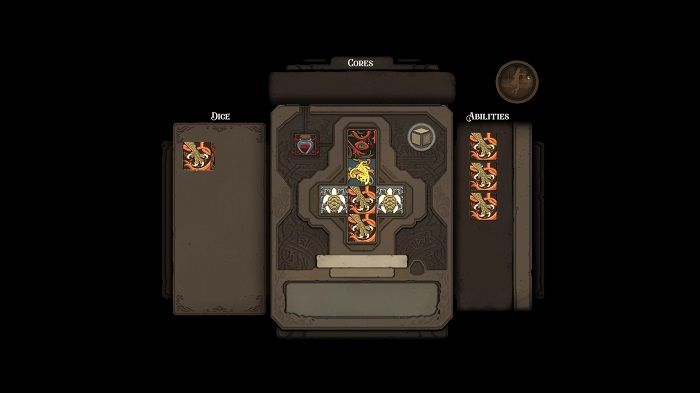Tamarak Trail Preview
Tamarak Trail is a deck-building roguelike with a unique twist. A mysterious meteor has crashed into the wilderness of the Canadian Shield. Now the presence has warped Tamarak Trail and its forest-dwelling inhabitants into malicious monsters.
You take on the role of a member of the Sturgeon Lodge, a secret society dedicated to keeping the peace. In order to defeat the evil infesting the trail, you must follow it to the very end. And since this is a roguelike, you’ll be dying a lot on the way.
There are three player characters with distinct abilities: the Detective, the Magician, and the Tracker. However, I only had a chance to try out the Detective for this preview. He appears to be the game’s rogue: sly, stealthy, and resourceful. He also seems quite squishy to me, but I assume this was intentional.
Midnight on the Canadian Shield
Tamarak Trail has a lot going for it to set it apart from other deck-building roguelikes. The game’s visual design is incredibly slick. I was interested in this game from the first time I saw it. It combines a murky atmosphere that reminds me of campfire stories with comic book-style visuals. The result is a distinct 2D aesthetic that feels both charming and spooky. And as someone who has hiking experience, the environment design does feel a lot like the actual Canadian Shield.

The sound design is excellent right off the bat. The cries of monsters are incredibly creepy and the music has a distinct folksy tone. The result is an ambiance that’s both familiar and foreboding. There’s clearly something very wrong with the titular trail. At the same time, exploring it never feels too scary. This is less a horror game and more a venture into unknown territory. The events can be quite gruesome, though.
Each character design is distinct but fits with the game’s woodsy setting and themes. Giant songbirds, werewolves, and less identifiable creatures attack you with teeth, claws, and hunting weapons. And the playable characters wouldn’t look out of place in an urban fantasy graphic novel. In short, this game looks and sounds good. But does it play good?
Tamarak Trail is a Spooky Good Time
Long story short, Tamarak Trail plays very good indeed. Like most other roguelites, Tamarak Trail features a limited action pool and a health bar. Unlike in most other roguelites, Combat Points serve two functions. You use them to perform dice actions, but they also soak up damage.
I only had 5 health during this preview build, so Combat Points were vital. Fortunately, they refilled for each new encounter. But after a while, I could tell how a fight was going just by looking at my point budget. Running out of Combat Points is essentially a game over. Unless you have dice options that can get you through it.

Instead of cards, this game uses dice faces. You roll the dice and use whatever faces come up. Dying, shops, and victories in battle unlock new faces which can be added to your dice. You can also find and add dice cores that bestow additional abilities to a given die. Allowing players to choose the abilities on each dice side is brilliant. I also love the choice to make dice bumping into each other a distinct mechanic. That said, I found the auto-rolling option to be very frustrating. The dice hardly ever bumped when using it. This made free-rolling far more effective.
The Difficulty Spike is Vertical
I had a lot of fun with Tamarak Trail, but this preview build was incredibly difficult. In general, this game demands strategy as well as luck. But if you’re careful and lucky with your dice sides, you can inflict massive amounts of damage on foes. The first time I got a boss’s Bleed stack to over 1000 brought a tear to my eye. Unfortunately, every enemy automatically gets a dodge stack after being wounded. And you can usually only inflict one wound per attack. So just inflicting a massive Bleed stack won’t be enough to kill anything.

The difficulty curve right now depends largely on your ability to master dice face combos. You literally will never make it past that first boss without mastering status effects. And while this is a roguelike, I think the first boss might be a little too difficult at the moment. The rest of the opening area is easy in comparison, while that boss is like a wall. I played for hours and only got past it once. The result feels almost like the game is lying about how hard it is.
Assembling dice and plotting out each side for maximum effect is incredibly fun. Getting caught in an infinite combo and losing an important die is less fun. I know it’s for game balance, but having an infinite combo taken away from me felt like being punished for thinking ahead. Also, the dice-rolling mechanics need work. I kept seeing the same faces popping up over and over when trying to roll manually. When I switched to auto-rolling, I didn’t get my bumps.

Finally, the weird rolls mean some builds are flat-out non-viable. I made the mistake of trying a defense-heavy build against the first boss. With no offensive die except the basic attack, I could do no lasting damage against it. And my Bleed-inducing die face refused to show. The result was an unwinnable boss fight that dragged on for ages. Even dying so I could restart the run took forever.
All in all, Tamarak Trail is far from perfect, but it is very promising. I’m eager to see where the game goes from here.
***PC code provided by the publisher***

